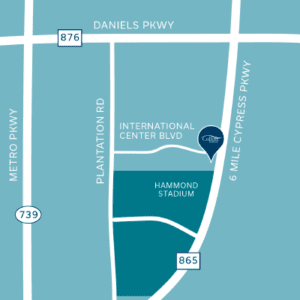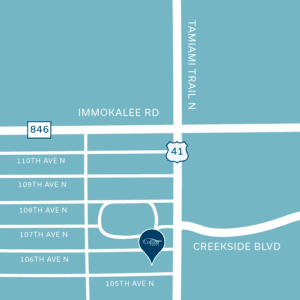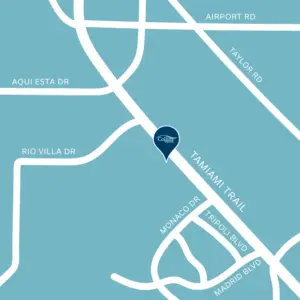LASIK ALTERNATIVES
clear vision is in sight

ASA
ASA, or Advanced Surface Ablation, is essentially flapless LASIK and can be a great option for patients that have been told they have thin corneas, have had previous LASIK, or have chronic dry eyes. As with LASIK, an excimer laser is used to reshape the cornea and correct nearsightedness, farsightedness and astigmatism. The difference is that, with ASA, the epithelial layer of your cornea is gently removed before using the excimer laser and a bandage contact lens is placed on the eye for comfort while your cornea grows back over the treated area. The end results are the same, but ASA does require a slightly longer healing process.
BLENDED VISION OR MONOVISION
Around the age of 40, the inevitable happens and we start to lose our ability to focus on near objects. This is called presbyopia. Activities like reading restaurant menus, texting on our cell phones, and working on the computer all become progressively more frustrating. Blended Vision is a technique used in both LASIK and ASA to help decrease a person dependence on these glasses by setting the non-dominant eye to see better at intermediate range (arm’s length) and the dominant eye set to see better in the distance. Your brain blends these two streams of information together smoothly so that you’re not conscious of having different visual ability in each eye.
REFRACTIVE LENS EXCHANGE
While most people are candidates for LASIK or ASA, some extreme hyperopic (farsighted) patients or certain presbyopic patients might benefit more from a Refractive Lens Exchange. The benefits of a Refractive Lens Exchange can be two-fold: it is able to correct both near and distance vision as well as eliminate the development of cataracts later on in life. The procedure itself is virtually the same as cataract surgery with the eye’s natural crystalline lens being replaced with an artificial intraocular lens.
Watch the video to learn more about Refractive Lens Exchange.
LASER VISION CORRECTION FAQS
Generally speaking, to be a good candidate for Laser Correction you should:
- Be at least 18 years of age or older.
- Have a stable prescription for at least one year prior to your procedure.
- Be free of any diseases of the eye that will alter you results.
- Have reasonable and realistic expectations.
- Anyone whose prescription is actively changing, especially more than one diopter per year.
- Pregnant or nursing mothers with unstable refractions.
- Someone with unrealistic post-surgical expectations. Although most of our patients are able to see 20/20 or better after surgery, no surgeon is able to guarantee post-surgical results.
- Anyone with an uncontrolled or untreated eye disease. Certain corneal dystrophies or a history or herpetic keratitis (a herpes infection in the eye) may be relative contraindications, as are certain arthritic syndromes and other autoimmune disorders.
Both procedures use the excimer laser to reshape the cornea and correct nearsightedness, farsightedness, and astigmatism. The difference is that, with ASA, the epithelial layer of your cornea is gently removed before using the excimer laser and a bandage contact lens is placed on the eye for comfort while your cornea grows back over the treated area. In comparison, an additional laser called a femtosecond laser is used during LASIK to create a thin, protective corneal flap before using the excimer laser and then the flap is replaced, eliminating the need for a bandage contact lens. The long-term results of both procedures are the same but visual recovery with LASIK is usually faster, with less discomfort.
There is usually no pain or discomfort during your LASIK or ASA surgery. The eye is anesthetized with numbing drops at the start of the procedure. Pressure can be felt, but it is not uncomfortable.
One of the things that patients always find surprising is quickness of the procedure. We regularly hear from patients “That was it??”!
For LASIK, surgery usually takes less than 20 minutes. For ASA, the length of time is usually even shorter, although you can still expect to be at St. Mark’s for about an hour to an hour and a half from start to finish.
Yes, if bilateral surgery is being performed, both eyes will usually be corrected on the same day. The results are so predictable and the procedure so safe that most people undergoing surgery prefer to have both eyes corrected on the same day. It also restores your balanced vision as quickly as possible.
This is one of our most common questions, and thankfully, nothing you need to worry about. Our excimer laser has built-in tracking device able to adjust the placement of the laser, if and when, your eye makes any involuntary movements. If your eye were to move too far out of range, the laser simply stops until it can get back on target and then restart exactly where we left off.
The only type of anesthesia used is anesthetic eye drops. These are very effective in making this a truly painless surgery. It’s normal to feel a little nervous! During your pre-operative visit, you will receive a prescription medication to take by mouth 30 minutes prior to arriving at St. Mark’s to help ease your nerves.
Yes. The surgical technique will not change, but your lens implant options may and a different formula to determine your lens implant power will be used.
Your likelihood of avoiding the need for eyewear is excellent but it also depends on the severity of your prescription or correction. You may still need to wear glasses and, as you get older, you will most likely require reading glasses to see up close
Once your eye has stabilized, the laser vision correction is permanent. Any additional need for glasses after that will usually be the result of normal aging process and not related to any instability of your procedure’s outcome.
No. Unfortunately, among the many LASIK eye surgery benefits, the prevention of cataracts, glaucoma, retinal detachment, macular degeneration, or any other eye disease is not included.
Depending on the severity of your dry eyes, ASA may be recommended over LASIK because it is thought that making the flap can exacerbate dry eye symptoms After the procedure, your operated eye may feel temporarily drier because the corneal nerves have been cut, causing the eye to produce fewer tears. This condition is usually temporary and typically lasts three to six months. It’s important, especially during this time, to take steps to reduce your dry eye symptoms through the use of Omega 3’s as well as artificial tears.
Most LASIK patients see clearly within 24 hours of surgery and are able to drive after their first-day post-operative exam. Many return to work and resume normal activities within a few days of LASIK. The results of the surgery will take several weeks to stabilize completely. For ASA patients, this process takes a little longer. Most can drive 3-4 days after surgery and see their best visual outcome within 4 to 6 weeks.
We suggest that the patient go home immediately after surgery and take the weekend to relax. We ask that patients do not swim and avoid dirty, dusty, and smoky environments for two weeks. If you’re having LASIK surgery, we will also give you protective, clear shields to place over your eyes at night during the first week to keep you from inadvertently rubbing them.






